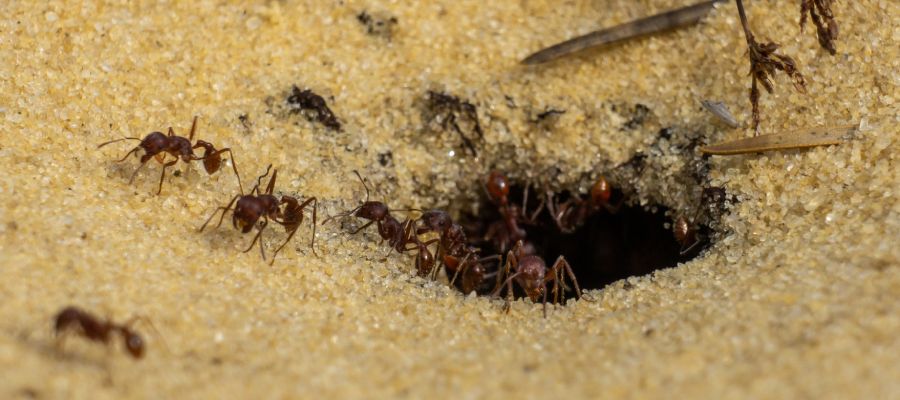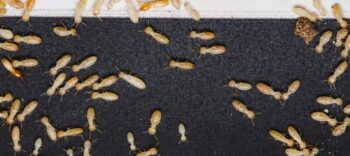
If you see ants in or around your home, it shouldn’t come as a shock. Ants are one of the most widely distributed types of insects on the planet. Individual ant species number more than 12,000 and they live almost everywhere on the surface of the earth except for Greenland, Iceland, and a few other islands.
Since ants live almost everywhere humans do, encountering them from time to time is inevitable. The vast majority of ant species aren’t a threat to humans. However, there are a few species that are especially venomous or aggressive. If you can identify these species, you can help avoid getting bitten or stung. The experts at Bug Out Control show you which ants to watch out for.
America’s Four Most Dangerous Ant Species
The field ant is a common ant species in the eastern US. They typically build their nests underground but sometimes they’ll build them in or under rotten wood. While they’re not venomous or aggressive, they made the cut because of the combination of being so common in much of the US and the fact that they’ll bite you if you encroach on their nest.
This one is a slight stretch. The velvet ant isn’t really an ant. It’s a type of wasp, but the females of the species are often mistaken for ants because they lack wings. They have a sting that’s venomous and extremely painful, which has given this insect the nickname “cow-killer” in the parts of the eastern US it inhabits.
There are many species of harvester ants in the US. Most of these aren’t a threat to humans. However, two species, the Maricopa harvester ant and Florida harvester ant are very dangerous. The Maricopa harvester ant is one of the most common ant species in Arizona and lives throughout the US southwest and Mexico. It’s believed to have the most toxic insect venom on earth. The Florida harvester ant is common from Florida to North Carolina and its venom is more toxic than a cobra’s!
The red imported fire ant is native to South America but was accidentally introduced to the US in the 1930s. It’s hands down the most dangerous ant species in America. Their venom is particularly nasty; it doesn’t just make the victim’s skin swell and burn. It also causes itchy pus-filled blisters that can last for up to ten days. Worse, significant numbers of people stung by these ants go into anaphylactic shock. Texas A&M University estimates that 14 million people per year are stung by these insects, most of them in the southeast. More than 80 deaths due to red imported fire ant stings have been reported in the US.
Ant Bites
Ants use their mandibles (jaws) to bite the skin of their target and then release formic acid – an irritating chemical – on the skin of the target. Ant bites usually cause redness, swelling and irritation. Some people are allergic to formic acid and they may experience more serious symptoms, like those that accompany an ant sting.
Ant Stings
While almost all ants have mandibles to bite with, only some have stingers and venom. Fewer still have venom potent enough to be hazardous to humans.
When ants sting, they’ll lock their mandibles in the skin of their target and release formic acid, just like when they bite. Then they’ll rotate the rear of their body, jab their stinger into the target and inject venom. The longer it takes to remove them, the more times the target can be stung, the more venom will be injected and the more painful it will be. Ant venom, especially fire ant venom, can also cause an allergic reaction which may include: itchiness, dizziness, nausea, vomiting, hives, and tightness in the chest, or difficulty breathing.
Trusted Ant Exterminators in Lubbock TX
Since 1963, Bug Out has been eliminating ants from homes and businesses in the Lubbock TX area. If you have ants in or around your property, especially if you suspect they may be fire ants, don’t wait until after someone is bitten or stung. Contact us now!





